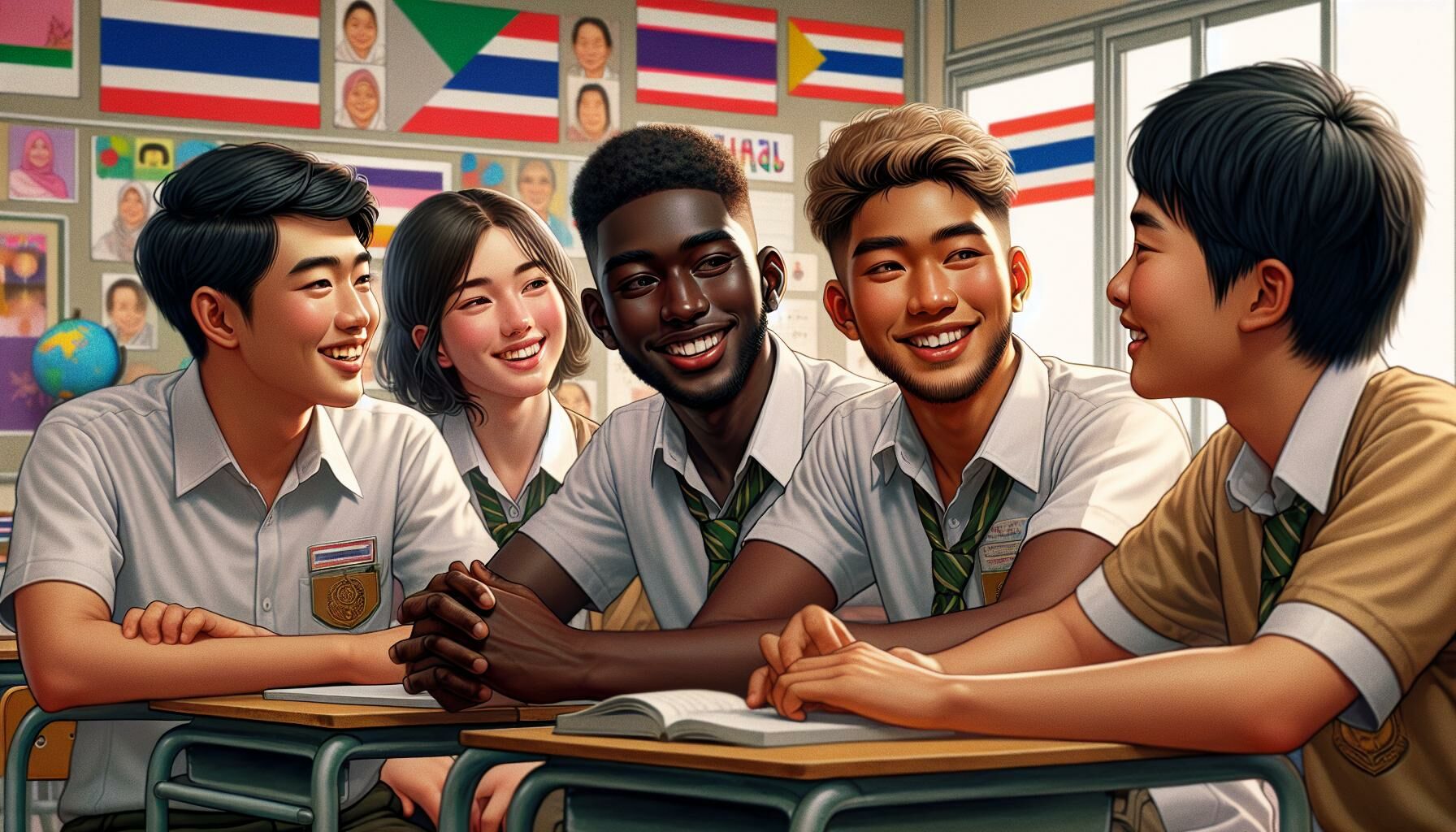Promoting LGBT acceptance and curbing bullying in Thai education

How LGBT folks are treated in Thai schools can really differ. Some schools are super inclusive, but others are still getting there. Surveys show LGBT students often face discrimination and get left out by classmates and teachers. Bullying is common and often overlooked because the support systems aren’t up to par. This difference shows we need programmes to tackle LGBT issues and clear up misconceptions, aiming to create a more welcoming space for every student.
To really get what’s going on with LGBT rights and efforts to stop bullying in Thai schools, we’ve got to take a closer look at what’s happening. This article dives into what LGBT students go through and looks at what’s being done to fight bullying and discrimination.
Strategies in Promoting LGBT and anti-bullying in Thai schools

Developing LGBT inclusive policies
Thai schools really need solid policies that stand up for LGBT rights. Start with straightforward anti-discrimination rules that protect students based on who they love and how they identify. Like, Chiang Mai University already has equality rules to make sure everyone gets treated fairly. Get input from LGBT advocacy groups to tackle specific issues LGBT students face. Plus, schools need to review these policies now and then to keep them effective and up-to-date.
Implementing anti-bullying programmes
Schools can roll out solid anti-bullying programmes that really work. These programmes need to have simple steps for reporting any bullying and good support for the kids affected. It’s super important to train teachers and staff so they know how to spot and handle bullying situations. Workshops can give both teachers and students useful anti-bullying strategies. Solid programmes might also include peer support systems to build a culture of accountability and empathy.
Promoting acceptance and understanding through education and school activities
Education can really help make schools more inclusive. Bringing LGBT topics into what students are learning is key to building understanding and acceptance. Schools could set up things like workshops and seminars about LGBT rights and experiences. Cultural events and awareness weeks are also great for highlighting diversity and creating a supportive vibe. These efforts can make schools a place where everyone feels valued and respected.
Case studies of successful LGBT and anti-bullying promotion in other schools

Description of successful examples from other schools or nations
In the Netherlands, lots of schools are all about LGBT-inclusive education now. They’re mixing LGBT topics into everyday classes to help everyone get along better. There’s this project called EduDivers that hooks schools up with stuff and training they need for inclusive teaching. Because of this, bullying’s way down, and the school vibe is way better.
Over in the USA, you’ve got the Gay-Straight Alliance (GSA) network backing LGBT students with these cool peer-led clubs. These clubs create safe spots for students and push for LGBT rights in schools. Research shows that schools with active GSA clubs are way more inclusive and have less bullying.
Strategies and policies that can be applied to Thai schools
Thai schools can totally use similar approaches to create a more inclusive vibe. By folding LGBT topics into the curriculum, they can make conversations about sexual orientation and gender identity feel normal. They could take a page from the EduDivers project in the Netherlands and have regular training sessions to get teachers up to speed on inclusive education.
Bringing in anti-bullying programmes like Finland’s KiVa is another great move. The success of KiVa highlights how important it is to get the whole school involved in tackling bullying. Such programmes could really help cut down on bullying in Thai schools.
Setting up peer support groups, similar to the Gay-Straight Alliances in the US, could give LGBT students a safe hangout spot. These student-led groups can offer support and push for inclusivity, helping to build a respectful school environment and cut down on social exclusion.
By jumping on these strategies, Thai schools can make things a lot more supportive and inclusive for everyone.
Challenges in promoting LGBT and anti-bullying in Thai schools
The video below is from SchoolRubric, YouTube channel.
Possible social-cultural challenges
Thai schools have their own set of social and cultural hurdles when it comes to promoting LGBT acceptance and anti-bullying efforts. Traditional Thai values often push for everyone to fit in, which can leave LGBT students feeling left out. Cultural norms and religious views heavily influence people’s attitudes toward different sexual orientations and gender identities. Often, old stereotypes and biases are still around, making life tough for LGBT students. A UNDP survey from 2019 showed that most LGBT folks in Thailand faced discrimination at school. To make schools more welcoming and inclusive, they need to tackle these cultural roadblocks and encourage understanding and respect for everyone among students and staff.
Potential institutional or policy-related challenges
Institutional challenges are pretty big hurdles too. Many Thai schools still don’t have enough policies to protect LGBT students from bullying. In 2021, Chiang Mai University set up some new rules to promote gender equality among students and staff, setting a great example. But, these kinds of policies aren’t common in all schools yet. Plus, teachers and administrators often don’t get the training they need on LGBT issues or anti-bullying tactics, which just makes things worse. A 2011 United Nations General Assembly report emphasised that having strong policies against discrimination and violence is key for the well-being of LGBT students. Thai schools really need to roll out solid anti-bullying programs and make sure these policies are consistently enforced to create safe learning spaces for everyone.
Latest Thailand News
Follow The Thaiger on Google News:


























